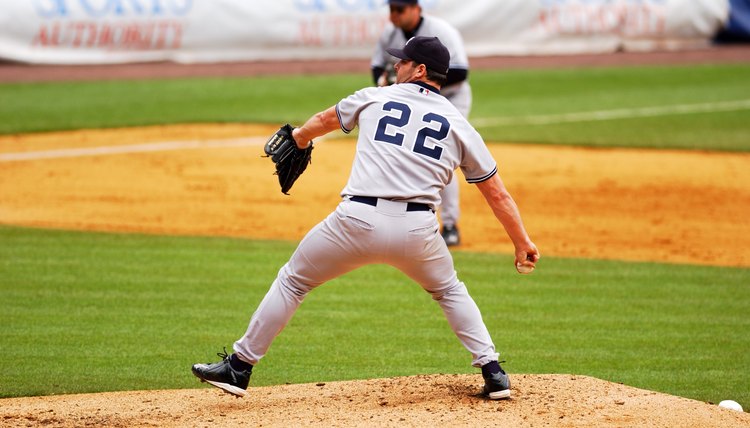How to Calculate Baseball Pitch Speed

In the MLB and in professional softball, pitching velocity is highly valued by players and coaches. Pitching distance (which is dependant upon the league and age group), combined with the speed of a pitch, plays a huge role in the amount of reaction time a hitter has until a pitch reaches the catcher’s mitt.
Professionals typically use a baseball radar gun or another kind of pocket radar to measure baseball pitch speed. However, you can also calculate a ball’s speed with equipment you have at home. This procedure will measure the average speed of the pitch per second as it travels from the pitcher’s release point to home plate. You’ll typically convert this value to miles per hour for greater convenience.

The Process
- Measure the distance from the pitcher’s mound to home plate with the measuring tape. This distance should be 60.5 feet for a major league baseball diamond.
- Time the baseball’s pitch from the time that it leaves the pitcher’s hand until it reaches the catcher’s glove using a stopwatch. For example, assume that the baseball’s travel time is 0.47 seconds.
- Compute the baseball’s average speed in feet per second with the formula S = D / T. The baseball’s average speed is "S," the distance that the baseball traveled is "D" and the time of the baseball’s travel is "T." If the distance is 60.5 feet and the time is 0.47 seconds, then the speed of the baseball is 60.5 / 0.47, or 129 feet per second.
- Multiply the speed of the baseball in feet per second by 0.682. This will convert the speed to miles per hour (mph). For example, a speed of 129 feet per second is equal to 129 x 0.682 = 88 mph.
- Calculate the speed of the baseball directly from its travel time in seconds. The equation S = (60.5 / T) * .682 = 41.3 / T will provide the baseball’s speed in miles per hour, where "T" is the time in seconds. Assuming that the distance is 60.5 feet, a travel time of 0.47 seconds indicates a speed of 41.3 / 0.47 = 88 mph.

Tips
Pitches take a fraction of a second to reach home plate. To be sure your timing and calculations are accurate, measure the speed of several pitches.You might also want to switch up the types of pitches to get a better idea of where your whole arsenal stands; calculate the average speed of a baseball when you throw your changeup, curveball, slider, and cutter in addition to your fastball.
Warnings
If it's your pitching speed you are calculating, be sure you are properly warmed up to avoid muscle strains and pulls.
